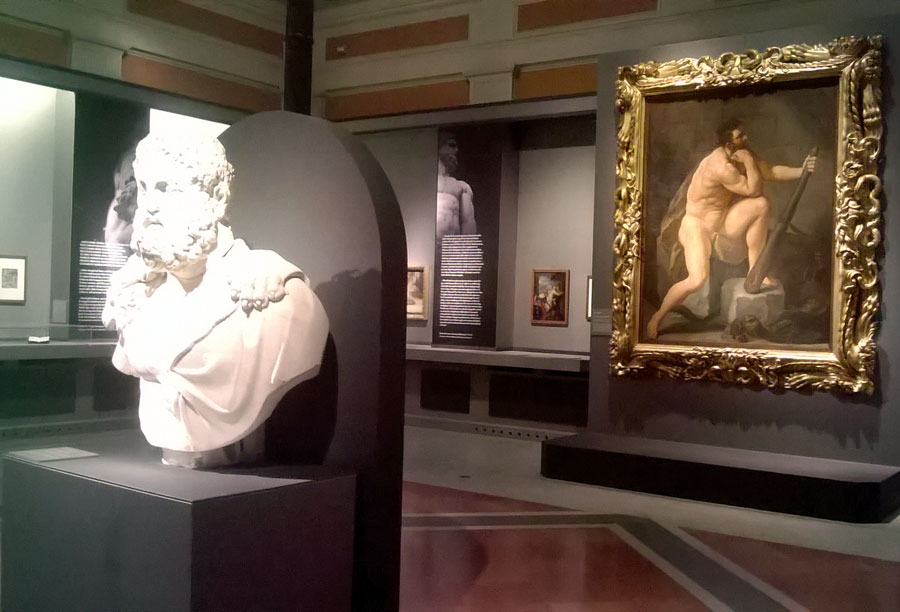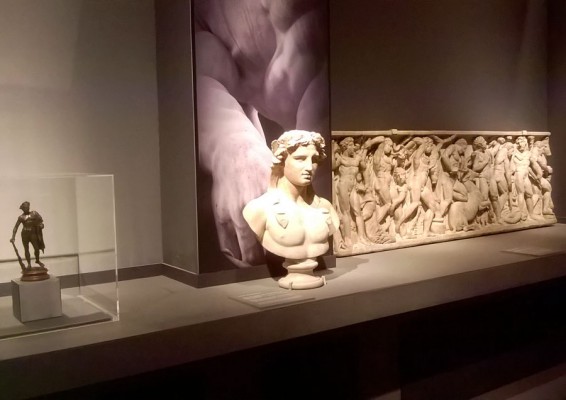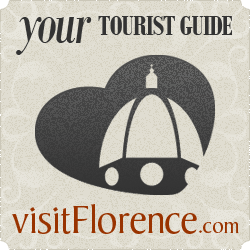Mai Visti 2015 – The City of Hercules: Mythology and Politics
2015

Once again, this year’s edition of the “Mai Visti“, or “Never Seen Before”, showcases works from the Uffizi Gallery normally found within its huge deposits and not seen by the general public. From December 19th until January 31st, 2016, the temporary exhibit curated by Wolfger Bulst with the collaboration of Francesca de Luca, Fabrizio Paolucci and Daniela Parenti, contains 51 works of art that revolve around the theme of Hercules found within the Reali Poste on the right side of the Uffizi (with Piazza della Signoria at your back).
The subject, often present in ancient statues (there are 9 pieces from the Uffizi deposits and from Villa Corsini) and sculpture in all sizes, is at the center of the exhibit that celebrates his extraordinary strength and incredible gestures. The central part of the show focuses on the Labors of Hercules (the Roman name for the Greek hero Heracles) with incisions, paintings and other works of art that illustrate various themes: Hercules at the crossroads between Vice and Virtue, which was hugely popular on its own between the 1400s and 1600s; the hero as a subject of research by antiquarians; the interesting iconography of the Gallic Hercules, which had chains of gold and amber spew from his mouth; Hercules as the defender of the Muses, who defend the arts from the avarice of merchants which represents their most insidious enemy.
To document the more human and fragile side of this great hero of humanity’s imaginary, there is the moment of satire, when Omphale, the queen of Lydia, has Heracles as his slave wear women’s clothes and do women’s work while she wore the skin of the Nemean Lion Heracles won during his first labor and carried his club.

The Myth and the Medici and Florence
While there is no one source that recounts the story of Hercules, his labors are known from works from ancient writers. The character is quite complex, one with incredible strength and heroic attributes while having human aspects, such as his sensibility to love, which in the end is his greatest weakness.
With his labors, he liberates the earth from monsters and evil characters, thus humanity recognizes his labors with a personification of virtue. For this reason, it is clear why in Medieval times the hero becomes a symbol for the Republic of Florence. Then, with when the Medici, and Cosimo de’ Medici in particular, come to power, a calculated decision is to embrace the hero as a propaganda symbol of the virtues of the prince himself. The hero can then be found in the decorations within Palazzo della Signoria, in the main civic piazza in front, in the private garden of Castello and even in the gran-dukes seal, on exhibit.
Francesco de’ Medici continued to celebrate Hercules – in his private study within Palazzo Vecchio and in the ceiling frescoes in the first corridor of the Uffizi Gallery and within the Tribune – but by the Baroque age, the human side of Hercules lost its symbolic importance and was no longer a central figure in large works of art.
A visit to this temporary exhibit is a must while you are in Florence this winter!
The City of Hercules: Mythology and Politics
Poste Reali, Uffizi Gallery
Open every day (except for Mondays, Christmas Day and January 1st)
10 am to 5pm, Free entrance










